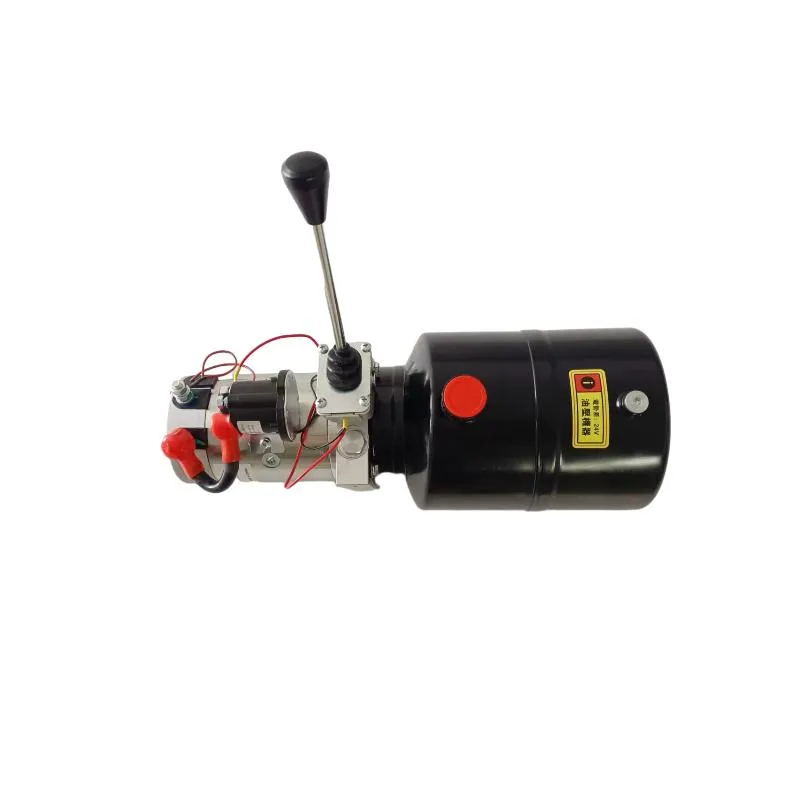Nov . 11, 2024 17:43 Back to list
custom tie rod type hydraulic cylinder
Custom Tie Rod Type Hydraulic Cylinders A Comprehensive Overview
Hydraulic cylinders are pivotal components in various industrial applications, providing the necessary force to perform tasks such as lifting, pushing, or pulling. Among the different designs available, the custom tie rod type hydraulic cylinder stands out due to its versatility, robustness, and adaptability to specific operational demands. This article delves into the characteristics, applications, advantages, and design considerations of custom tie rod type hydraulic cylinders.
What Are Tie Rod Hydraulic Cylinders?
Tie rod hydraulic cylinders are characterized by their external rods that maintain and secure the cylinder components together. This design typically features two or more tie rods that run the length of the cylinder. The cylinder barrel, end caps, and piston are affixed by these rods, ensuring a strong and stable configuration capable of handling high-pressure operations.
Advantages of Custom Tie Rod Design
One of the primary benefits of a custom tie rod design is its adaptability to specialized applications. Manufacturers can modify dimensions, materials, and components to meet specific requirements, optimizing performance based on the intended application. The ability to customize the cylinder allows for greater flexibility in design, accommodating various working environments and loads.
Another significant advantage is the ease of maintenance. The tie rod structure allows for straightforward disassembly, making it easier to repair or replace internal components without extensive downtime. This feature is particularly beneficial for industries that require regular maintenance or face frequent wear and tear.
Common Applications
Custom tie rod type hydraulic cylinders are widely utilized across various industries, including construction, manufacturing, agriculture, and transportation. In construction, they are often employed in heavy machinery such as excavators and loaders, providing the necessary lifting power to perform heavy tasks. Similarly, in manufacturing, these cylinders power automation equipment, such as presses and stamping machines.
custom tie rod type hydraulic cylinder

In the agricultural sector, custom tie rod cylinders assist in operating equipment like planters, harvesters, and tractors, enhancing productivity and efficiency. Additionally, they play a vital role in the transportation industry, where they are used in trucks and trailers for lifting and lowering cargo.
Designing Custom Tie Rod Cylinders
Designing a custom tie rod hydraulic cylinder involves careful consideration of several factors. First, the operating environment plays a critical role in determining the materials used. For instance, cylinders exposed to corrosive substances may require stainless steel or specialized coatings for protection, while those operating in extreme temperatures may need thermal-resistant materials.
Next, the expected load specifications dictate the size and capacity of the cylinder. Engineers must calculate the maximum pressure, stroke length, and bore diameter to ensure optimal performance. Additionally, the design process should include considerations for mounting options, port locations, and any space limitations in the application setting.
Performance Considerations
The performance of custom tie rod type hydraulic cylinders is influenced by various factors, including the hydraulic fluid used, the quality of seals and fittings, and adherence to manufacturing standards. Utilizing high-quality hydraulic fluid ensures optimal lubrication and efficiency, while precision-engineered seals prevent leaks and ensure longevity.
Furthermore, compliance with industry standards and regulations is crucial. Custom cylinders must be designed and tested to meet safety standards, ensuring their reliability in demanding applications. Regular inspections and adherence to maintenance schedules also contribute to the longevity and performance of hydraulic cylinders.
Conclusion
Custom tie rod type hydraulic cylinders are vital components across numerous industries, enabling heavy lifting and mechanical tasks with efficiency and reliability. Their customizable nature, ease of maintenance, and robust design make them a preferred choice for many applications. By understanding the advantages, applications, and design considerations of these hydraulic cylinders, industries can harness their full potential, optimizing operations and ensuring safety and performance in their respective fields. As technology evolves, the future of hydraulic systems continues to promise even greater innovations and enhancements.
-
1.5 Ton Flipping Oil Cylinder 70/82-40-217-720-Hebei Shenghan Hydraulic Machinery|Precision Hydraulic Cylinder,Custom Hydraulic Solutions
NewsAug.29,2025
-
1.5 Ton Flipping Oil Cylinder 70/82-40-217-720 | Hebei Shenghan Hydraulic Machinery Co., Ltd.
NewsAug.29,2025
-
High-Precision [90/105-50-180-480] Industrial Component | Durable & Reliable
NewsAug.27,2025
-
High-Performance Set of 50/60-45-290 471 | Durable & Reliable Components
NewsAug.26,2025
-
Efficient Pallet Truck Power Units - Reliable Hydraulic Systems
NewsAug.25,2025
-
Premium Set of 50/60-45-290 471 Parts | High Performance
NewsAug.24,2025
